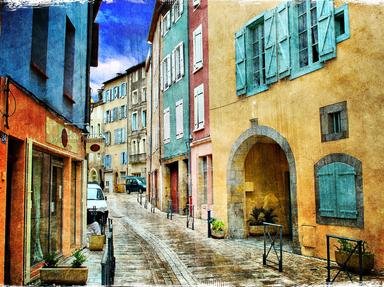Quiz Answer Key and Fun Facts
1. During the Early Christian/Byzantine era, two styles of church construction were developed. What were they?
2. Who was the inventor of the Gothic style of architecture, and what was the first building done in this style?
3. He is considered the greatest Greek sculptor, however, none of his works survive. He served as one of the architects of the Parthenon, but was known mainly for sculpture. Who was this man who supposedly constructed the Statue of Zeus at Olympia, which was one of the Seven Wonders of the Ancient World?
4. This Egyptian is the first artist known by name. He was a priest in the Egyptian religion as well as a renowned doctor. Who was this man, the architect of the Step Pyramid?
5. Rembrandt's most famous work is "The Militia Company of Captain Frans Banning Cocq and of Lieutenant Willem van Ruytenburgh." By what title is it better known as?
6. This man's "Lavender Mist" is a fine example of abstract expressionism. His "drip" method of painting is perhaps the most famous alternative style of applying paints. Who was this man?
7. This Pop Artist is known for his monumental sculpture. Instead of being monuments to particular people or events, they are monuments to pop culture. Who is this man who has done sculptures in the form of ice bags and close pins?
8. This artist is hard to classify as a sculptor, but there really isn't a better classification. He is known for producing outdoor works, mainly wrappings. Who is he?
9. Had it with fill in the blank? Here's a multiple choice. This early American artist has a simplified style, much like many of his folk artist contemporaries. He trained himself to do miniature portraits, but found that he couldn't make any money off of doing that. So, in the 1830's he set out to paint the lands and Native Americans west of the Mississippi. There he did many portraits of chiefs and scenes of daily life. In the 1850s he held a show touring through out Western Europe, and Eastern North America. Finally his works ended up in the possession of the Smithsonian. Who was this painter?
10. Architect Walter Gropius was the pioneer of this style of architecture. This style called for "rational" architecture, and thus did away with ornamentation. This simple style would have the most influence on 20th Century architecture. What was the name of this school of architecture?
Source: Author
jsonitsac
This quiz was reviewed by FunTrivia editor
thejazzkickazz before going online.
Any errors found in FunTrivia content are routinely corrected through our feedback system.

